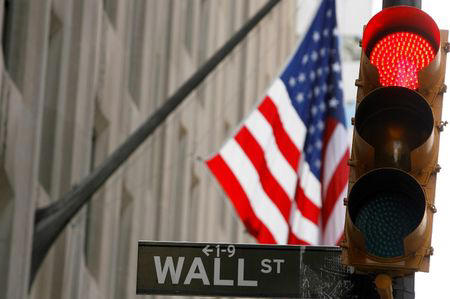The slight decline in U.S. stock index futures during evening trading on Wednesday followed hawkish remarks from Federal Reserve Governor Christopher Waller, which tempered the market’s momentum after a strong session on Wall Street earlier in the day. Waller’s comments, coupled with anticipation surrounding the final reading on U.S. fourth-quarter gross domestic product (GDP) scheduled for release on Thursday, contributed to a sense of caution among investors. Additionally, market participants were awaiting key inflation data and speeches from other Federal Reserve officials scheduled for Friday, further influencing trading sentiment.
Despite the anticipation of economic data and Fed communications, overall trading volumes remained subdued as investors braced for the upcoming Good Friday holiday. S&P 500 Futures dipped 0.1% to 5,304.75 points, Nasdaq 100 Futures also declined 0.1% to 18,485.75 points, and Dow Jones Futures edged down 0.1% to 40,119.0 points as of 19:16 ET (23:16 GMT). The cautious tone in evening trading reflected investors’ vigilance amid evolving economic indicators and central bank communications.
Waller says no hurry to trim rates
Speaking at a gathering of the Economic Club of New York, Federal Reserve Governor Christopher Waller expressed a view that there was no urgency for the Fed to implement interest rate cuts at the present time. He pointed to a series of inflation readings in recent months that had surpassed expectations, suggesting a need for caution in adjusting monetary policy. Despite acknowledging the likelihood of interest rate cuts later in the year, Waller emphasized the current resilience of the U.S. economy, indicating that the Fed had ample room to maintain higher interest rates for an extended period.
Waller’s remarks represented a departure from the somewhat dovish stance taken by the Fed in the previous week, during which the central bank had indicated the possibility of up to 75 basis points of rate cuts in 2024. This earlier stance had sparked a rally on Wall Street, with U.S. stock indexes now hovering close to record highs. Waller’s comments offered a more cautious perspective, reflecting the Fed’s ongoing assessment of economic conditions and its approach to managing inflationary pressures.
Wall St snaps three days of losses, S&P 500 hits record high
On Wednesday, Wall Street indexes staged a notable rebound, surging after three consecutive days of losses, supported by a decline in bond yields that fueled robust gains in utility stocks.
The S&P 500 soared by 0.9%, closing at a new record high of 5,248.49 points. Meanwhile, the Dow Jones Industrial Average led the market rally, posting a remarkable 1.2% surge to close at 39,760.08 points, although it fell short of reaching its own record highs. Notably, the Dow’s gains were primarily driven by the strong performance of pharmaceutical giant Merck & Company Inc (NYSE: MRK), which achieved a record high following the U.S. Food and Drug Administration’s approval of a drug for the treatment of a rare lung illness.
Despite the overall positive sentiment, the NASDAQ Composite index slightly lagged behind its counterparts, advancing by 0.5% to reach 16,399.52 points. The NASDAQ’s gains were tempered by ongoing losses in the shares of artificial intelligence leader NVIDIA Corporation (NASDAQ: NVDA). Traders opted to capitalize on profits, resulting in a downward pressure on NVIDIA’s stock, which slid nearly 7% from its recent near-record high peak. In aftermarket trading, Nvidia experienced a further decline of 0.3%.
The market’s reaction underscored the dynamic nature of investor sentiment, with shifts in bond yields and individual stock performances influencing overall market movements. Despite some sectors outperforming others, the overall upward trajectory of the major indexes reflected renewed optimism among investors following recent volatility in the markets.
PCE data, Fed speakers awaited
As markets awaited further cues on inflation, all eyes turned to the upcoming release of the Personal Consumption Expenditures (PCE) price index data, which is considered the Federal Reserve’s preferred gauge of inflation. This crucial data was scheduled for release on Friday, a day when markets would be closed for the holiday, but its implications were anticipated to heavily influence the outlook for U.S. interest rates.
Investors closely monitored the PCE data for insights into the trajectory of inflationary pressures in the U.S. economy. Given the Federal Reserve’s dual mandate of maintaining stable prices and maximizing employment, any significant deviation from the Fed’s inflation target could prompt adjustments in monetary policy, particularly regarding interest rates.
In addition to the PCE data, market participants also looked forward to addresses from Federal Reserve Chair Jerome Powell and Federal Open Market Committee (FOMC) member Mary Daly, scheduled for the same day. These speeches were expected to provide further clarity on the Fed’s assessment of economic conditions, inflationary trends, and potential policy responses, shaping market expectations in the process. As such, these events were poised to be significant drivers of market sentiment and volatility, as investors sought guidance on the path ahead for monetary policy.
